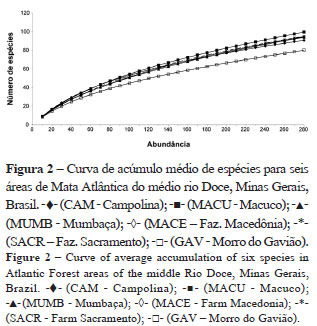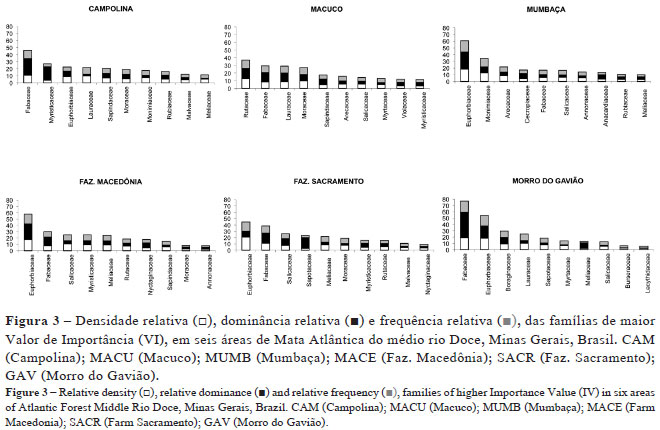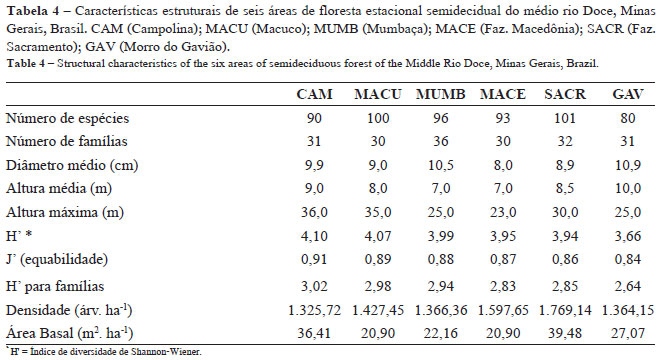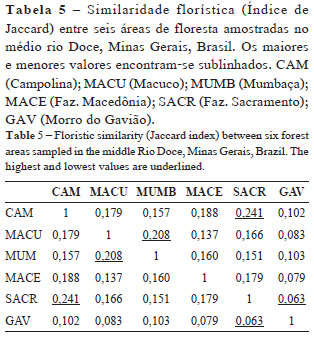The Atlantic Forest of the middle Rio Doce is considered one of the most endangered vegetation of Minas Gerais, because of intensive destruction occurred in the past. The forests are the only sources of information of the original vegetation in the region. The aim of this study was to characterize the floristic composition, structure, floristic similarity and the species distribution of the forest community from Rio Doce state park and neighboring areas. We studied six sites, using the point-centered quarter method. In each area, we sampled 70 points, and measured circumference (> 15 cm) and height of trees. We found 61 families, 195 genera and 373 species. The number of families varied from 30 to 36 for study area and, the number of species from 80 to 101. Floristic similarity indexes (Jaccard) among areas ranged from 6.3 to 24.1 %, showing that the areas were very different. There was significant relationship between species distribution and soil variables. Shannon Diversity Indexes varied from 3.66 to 4.10. The median diameter varied from 8.0 to 10.9 cm and the height from 7.0 to 10.0 m. The floristic heterogeneity seems to reflect the disturbance history and the influence of soil factors in the distribution of tree species in the middle Rio Doce.
tree community; phytosociology; heterogeneity













